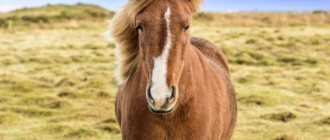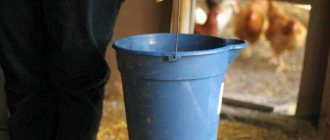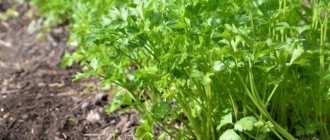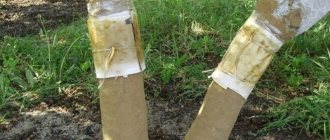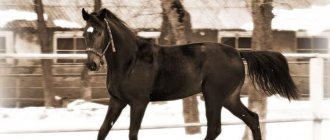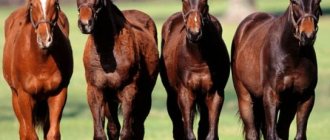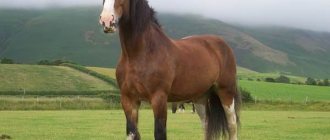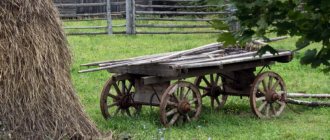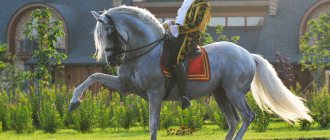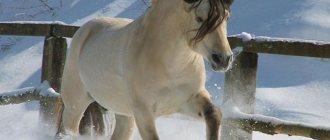In order to understand the purpose and types of horseshoes, it is advisable to turn, oddly enough, to the shoes that a person wears. It was created a long time ago with the aim of protecting feet from negative external factors (climatic, biological, anthropogenic). Practical function is closely related to comfort, so shoes are selected with an understanding of where and when they need to be worn. For example, in hiking conditions, preference should be given to comfortable boots that do not restrict movement, but high heels will be inappropriate, felt boots with fur, light moccasins, sandals are worn according to the weather and season, orthopedic shoes are indicated for problems with the musculoskeletal system, etc.
Horseshoes for horses are selected using a similar principle. It is a metal plate that is placed on the horse's hoof to protect it from damage and injury. Its presence is fundamentally important, since a horse is a heavy animal, spends almost all its time on the move, and the surface on which it walks can be different.
Depending on the activity the horse is involved in, there are several types of horseshoes. So, there are horseshoes that are suitable for the build of the average horse and its physical activity - standard ones. They are sized (there are 13 sizes of horseshoes ) and can be equipped with spikes (to prevent slipping in the autumn-winter period). The only difference in shape is that the horseshoes for the front hooves are made more rounded.
Jumping or dressage requires thin and perfectly fitting horseshoes, that is, ones that do not extend beyond the hoof. Finally, orthopedic horseshoes, as you might guess, are designed to correct horse movements, correct hoof defects, prevent diseases of the musculoskeletal system and relax. These horseshoes are made strictly according to measurements, taking into account a specific problem or task, and their “wearing” is prescribed by a veterinarian.
Why are horses shoed?
Why do horses need horseshoes, because before, even before humans tamed and domesticated them, animals did not need them? The explanation is simple: in the wild, they do not need these devices that protect the hooves. Animals traveled long distances on soft soil or grass, choosing their own path. After they became pets and became completely dependent on humans, everything changed. If a horse served as a cab driver, he had to transport goods or people along paving stones or stone roads. The horsemen were always well armed and dressed in heavy chain mail. All this put a lot of stress on the horse's hooves. Therefore, in order to protect the soles of the animal’s feet, man came up with a kind of shoes for them - horseshoes.
The purpose of horseshoes
Horse hooves are strong enough to protect the feet of animals in virgin lands. But wild horses run without stress, choosing their own path and avoiding sharp stones and other obstacles. In addition, a free lifestyle and high activity help strengthen the stratum corneum. Horses kept in a stable have completely different conditions. Limited walking reduces physical activity of the body, which is why the hooves lose their density and are more easily abraded. They have to run not only on the ground, but also on asphalt, paving stones, other hard surfaces, and even with ballast. All this leads to the fact that the hoof horn wears off much faster than it grows back.
Sports
Horseshoes designed for performance horses are both more durable and made from lighter metals. Different sports have their own types of horse shoes.
For racehorses, horseshoes are made light; their weight should not exceed 120 grams. They are made from durable spring steel. If the races are on a slippery track, then the horseshoe should have a trapezoidal cross-section.
For all-around competitions, carbon horseshoes with a 10 mm edge on the bottom surface are used. For winter competitions, horseshoes are round, weighing 180-200 grams, with three spikes. Also, Berezovets horseshoes are suitable for all-around events - horseshoes without spikes, with special thickenings.
Carbon for all-around
Racing horses are shoed based on the type of ground the horse will run on. These can be either weighted Berezovets horseshoes or standard horseshoes weighing 300 grams.
Dressage horses are usually not shod, but simply have their hooves cleaned on time. If necessary, you can shoe the forelimbs on light, smooth horseshoes.
For equestrian games, it is better to opt for coal horseshoes with low sides. In this sport it is prohibited to use horseshoes with spikes to avoid various injuries.
In winter, to participate in winter sports, horses are shod on coal horseshoes with special teeth along the outer side. A special feature of winter horseshoes is the presence of a thin metal bottom to prevent snow from sticking to the hoof.
Easy option
These were the main types of horseshoes. If the animal is sick, for example, the horse has the flu or is injured, orthopedic horseshoes will be indispensable. Such horseshoes can reduce discomfort and pain when walking, speed up the healing process, correct hoof deformation, and even out the horse’s movement.
In each individual case, different horse shoes are used. For example, if there is a mid-crack in the hoof, choose a round-shaped horseshoe with side flaps and toe spikes. When the base of the hoof skin is inflamed, a round horseshoe with a cutout at the level of inflammation is used. In any case, such horseshoes should be selected by a veterinarian.
https://pets2.me/bok/1920-podkovy-dlya-loshadey-naznachenie-vidy-pravila-podkovki.html
What tools will you need?
To nail horseshoes, you need the following tools:
- special pliers;
- hook;
- rasp with two types of notches;
- pruning;
- knife with a curved end (hoofed);
- hammer;
- key.
Forging tools
Forging tool set
Toolbox
The horseshoe is fastened with special nails - nails, which differ in the shape of the head and pin. Ukhnali are produced in lengths from 45 to 70 mm, and according to GOST they are divided into six sizes. They are used only once and are not suitable for repeated use. Additionally, during the work process you may need a forging machine - it is used in cases where the animal is excessively timid or impatient.
Uhnali for forging
Step-by-step instruction
The forging process involves a number of nuances. A lot depends on the horse here. For example, overly active or timid horses are shoed within several days. In the first one, they simply tap the hoof with a stick. Place a horseshoe on the second one and lightly hit it with a hammer. Another day they shoe one hoof and then all the others.
The horseshoeing process itself takes place in the following stages:
- The performer lifts the horse's leg and carefully cleans dirt and debris from the sole with a hook.
- Using pliers, remove the old horseshoe.
- Using a hook and a knife, remove the remaining dirt and cut off excess horny tissue.
- Using a rasp, the entire surface of the hoof is leveled to a flat state.
- All other hooves are cleaned and trimmed in the same way.
- A new horseshoe is tried on the cleaned area of the sole. If it doesn't fit a little, it is adjusted on the anvil.
- Reattach the horseshoe to the hoof. If it lies down as it should, they begin to drive in the hoot. Do this alternately on each side of the horseshoe.
- The ends of the outer parts are bent so that they do not interfere.
- Using trimming, the protruding ends of the nails are cut off, after placing the animal’s hoof on a special stand.
- Finally, the walls of the hoof are filed with a rasp so that they match the dimensions of the horseshoe.
Thus, if the shoeing process is carried out correctly, the horse does not feel pain at all. But if an inexperienced executive gets down to business, he can hurt the part of the hoof where the cartilage and nerves are located. In this case, the animal will not only feel pain, but may also be seriously injured. Therefore, it is not recommended to shoe horses yourself without proper experience.
Horse hoof structure
Without knowledge of the structure of the hoof, it is not possible to shoe a horse correctly. Moreover, such an attempt can only further damage the animal’s “shoe,” which will incapacitate the horse for some time.
A horse's hoof consists of outer and inner parts. The external one includes the following elements:
- Sole. It is a flat formation of keratinized tissue. Responsible for protecting the inside of the hoof from damage.
- Wall. It is located around the horny capsule and protects the meat part from lateral damage. It also involves a layer of horny tissue.
- Arrow. Consists of the same fabric as the sole, but more elastic. It complements the hoof protection. In addition, it reduces the impulse from the impact of the hoof on the ground.
- Border. It is a layer of skin that acts as a transition between the hoof and the leg.
The internal part includes the following components:
- Sensitive sole.
- Meat whisk.
- Pterygoid cartilages.
- Sensitive arrow.
- Crown ring.
The role of the meat part of the hoof is to nourish the keratinized tissues of the outer part. It is worth noting that the nerve endings pass precisely in the inner part of the horny capsule, while they are not present in the outer part.
What is a hoof: anatomical and physiological features of this body segment in horses
The hoof is a horny growth that forms around the phalanges of a horse.
In fact, the horny tissue of this formation is a transformed, calloused epidermis. A person also has similar growths on each finger, designed to protect the soft flesh from various damage and help us cope with food and other objects. We are talking about nails, which from an anatomical point of view have much in common with a horse's hoof.
Why are the hooves covered with horny tissue and not any other? The thing is that such a small part of the animal’s body must withstand:
- the horse's own body weight;
- the impact force that occurs upon contact with the ground.
At the same time, the task of the hooves is not only to allow the horse to move, but also to protect the joints of its limbs from deformation.
This is what a horse's hoof looks like
This animal is a distant ancestor of the following modern animals:
- horses;
- zebras;
- donkeys
It was a herbivore, had no strength to resist attacks from predators, and tried to lead a calm, peaceful lifestyle.
Eohippus, instead of the hooves we are considering today, had small paws topped with claws, which allowed him to run quickly. However, forced to hide from predators, Eohippus ran so fast, covering long distances, that his paws could not withstand the load without starting to deform.
Scientists were able to reconstruct what the ancestor of horses, the animal Eohippus, looked like after lengthy research.
This deformation was as follows:
- the central fingers of Eohippus, as well as the claws on these fingers, began to harden and strengthen;
- Due to the almost complete absence of load on them, the animal’s lateral fingers began to weaken and lose size.
Over time, the lateral processes of Eohippus completely became part of the middle fingers. As a result, this formation over time turned into something similar to modern horse hooves. At its core, this part of the horse’s body is simply the horse’s only finger, unusually developed, which is covered with a hard protective layer of horny tissue.
Process steps
Horse shoeing is a rather complex process, and it consists of several stages, which include:
- Choice of horseshoes.
- Preparing tools.
- Examination of the animal.
- Removing old horseshoes.
- Hoof trimming.
- Taking precise measurements for making new horseshoes.
- Fit.
- Fastening.
- Final inspection.
The first stage involves selecting “shoes” for the horse that are ideal for its size, breed and what it is used for. Of course, only an experienced farrier should do this - only then the result will be what is expected.
At the second stage, it is necessary to prepare all the tools that will be required during the work process. A farrier, or blacksmith, must have the following list of tools:
Read also: How to independently determine the fur of a fur coat
- uhnali - nails with which fastening is carried out;
- special pliers;
- pruning;
- rasp;
- special hammer;
- paring knife;
- paw;
- spike key.
Of course, in addition to this, a special machine is required. With its help, the horse can be fixed in the desired position. There are two types of machines: high and low. The former allow you to slightly raise the animal above the ground, while the latter are more stable and do not frighten the horses when they are shoed.
Then the old “shoes” are removed. At the same time, the old horse shoe should be carefully examined - this will make sure that the forging tactics and the horseshoes themselves are chosen correctly. If the defect is repeated again and again, the horse may become lame.
Next, they carry out clearing, that is, removing the dead horn. It is very easy to recognize - it is whitish-gray in color, has many cracks, and begins to crumble easily when trimmed. This peeling horn must be completely removed with a knife, and then the sole must be filed with a rasp. Only after this can you proceed to taking measurements, which are necessary for making new horseshoes, if we are talking about hand-made ones, or for purchasing factory ones of the required size.
Then adjustments should be made. It can be of two types:
- Cold. Cold fitting is more convenient because it does not agitate the animal and does not dry out the surface of the hoof.
- Hot. Hot fitting is more precise and is therefore used much more often.
When the fitting is successfully completed, you can proceed to attaching the horseshoe. To do this, they use uhnali - special nails that securely hold the “shoe” on the horse’s foot. Horse shoeing involves securing a horseshoe to the hoof using six hooks. When everyone is hooked in place, the blacksmith bites off their ends using special pliers.
At the end of these procedures, it is necessary to examine the animal. To do this, it is carried out both at a trot and at a walk. There should be no lameness or restriction of movement. If it is discovered that horse shoeing has been performed incorrectly, the defect must be corrected immediately before it leads to unpleasant consequences.
Why forge and is it worth doing? Today, equestrians and horse owners do not ask this question, because they know that this is the only way to maintain the health of a horse’s legs and hooves.
Reforging time
But you need to remember not only when and how to shoe a horse, but also about the timing of shoeing. When determining these terms, it is necessary to take into account the nature of the soil on which the horse most often moves, as well as the speed at which his hoof wall grows, which is an individual indicator.
Typically, reforging is required monthly, but in some cases it is acceptable to reforge every 45 days.
Only an experienced farrier will be able to determine the timing appropriate for a particular animal. Therefore, you need to choose a specialist who you can trust with your pet’s health.
Shoeing today is not a luxury, but a necessity that all horse owners face.
How often are horses shoeed?
The frequency of shoeing depends on the conditions in which the animal is kept and the purpose of the horse. Sports horses are reshod monthly. Sometimes, reforging times exceed forty-five days.
Why does a horse need shoeing? The fact is that a horse's hoof grows, just as the claws of other animals grow. The hoof growth process occurs unevenly. Monthly shoeing of horses allows you to better care for the animal's hooves and improves its appearance.
The main thing in forging is the material from which the horseshoe is made and the skill of the blacksmith. Modern horseshoes for horses are made on special machines from a certain durable metal. These are stamped products.
Some skilled blacksmiths make homemade forged horseshoes. They are adjusted exactly to the size of the horse's hoof. A horse forged by a blacksmith will have a clear, confident and easy gait.
There is a “hot” and “cold” method for fitting horseshoes. A blacksmith who forged a horseshoe himself and adjusted it to the size of the hoof using a “hot method” knows that this way the product will be fixed more accurately and evenly on the horse’s hoof.
The “cold method” of fitting is less frightening to the animal and does not dry out the surface of the hoof. Using modern tools, adjusting a horseshoe to the desired size is not difficult, but such work requires certain skills. Forging a horseshoe is a responsible and labor-intensive task.
How often does replacement occur?
New horseshoes are required approximately every 45 days. This order came from the Russian cavalry. Although at that time the horses in their stalls had a clay floor covered with sawdust. Today, asphalt pavement is more common. Cavalry horses galloped more often on grass and earth, rather than on sand in an arena or stone pavement.
Replacement time is approximate. Individual characteristics are also taken into account. In different individuals under the same conditions, the cornea grows at different rates. Some people have their horseshoes changed every month, others walk normally even two months.
Much depends on nutrition and exercise. Movement and proper diet help maintain proper metabolism. Overfeeding, for example, oats, also harms the condition of the hooves.
Shoeing a horse is a procedure that requires skill and certain knowledge. Few do the job correctly, which can lead to serious consequences. It is better to consult a veterinarian and entrust this matter to a good farrier.
Types of horseshoes
The whole variety of horseshoes is combined into three types - sports, standard and orthopedic. Each group includes various modifications intended for specific purposes.
The sports type of horseshoes is used for horses taking part in competitions, races and all-around events. Such models are made from spring steel, aluminum and alloys that have high strength and low weight. The type of competition determines the weight and shape of the horseshoes that will be installed on the horse. In horse racing, models weighing up to 120 g are usually used, and for all-around events, products weighing 180-200 g, with a side and thickenings at the bottom, are suitable.
using the standard type . The weight of the models is 200-720 g and depends on the size. The set includes removable spikes - rounded, small for summer and long and sharp for winter. Horseshoes can be made in factories or forged privately by blacksmiths.
The orthopedic group is made of plastic, steel and aluminum and has various designs. The shape of the product depends on the type of injury and the condition of the hoof, so each set of horseshoes is selected individually. These devices help relieve pain when moving, speed up healing, and even out your movement.
Externally, orthopedic products are similar to sandals with spring fastenings and straps made of plastic. The absence of nails in the fastening allows for quick and easy replacement of protective devices. Such models are quite expensive and not every horse breeder can afford them. Cheaper options, which are also made of plastic, are attached with small nails or glue and have a standard horseshoe appearance.
Types of products
They are divided into three large groups: standard, sports and orthopedic. Within each group there are types of horseshoes that are intended for their intended use.
Standard, simple horseshoes are used for workhorses. Their weight depends on size: it ranges from 200 to 700 grams. Manufactured complete with removable spikes. Winter horseshoes have a pointed, elongated shape, while summer horseshoes, on the contrary, are round and low. They are made both in factories and by professional blacksmiths.
Forging process
For each horse, individual horseshoes are made to measure or selected from standard ones.
To make a horseshoe, it is important to take three measurements:
- distance from the middle of the toe wall to the heel corner;
- the distance in the widest part is the center on the chest and the back third on the pelvis;
- width at the heel corners.
More precisely, the results are obtained using a podometer - a metal circle with cut out chords 1 cm wide and the same gap between them. The finished horseshoe is adjusted to match the anatomical features of the horse's hoof. First of all, they achieve perfect contact between the sole and the horseshoe. The nail holes should be placed opposite the white line. A correct horseshoe protrudes slightly beyond the hoof wall - 5 mm at the toe, up to 15 mm at the heel corners.
Shoeing Features:
- for working horses, strong horseshoes with a wide outer branch set to the side are used;
- sport horses are shod every 4 weeks on light horseshoes;
- for trotters, horseshoes with elongated toes are used, which makes the move more confident.
The horseshoe is placed on the hoof so that the nail holes are opposite the white line. The first nail is inserted into the toe wall on the medial side. The tip of the nail has a bevel that should point inward - this ensures that the nail comes out
The first blows with the hammer are made carefully to make sure the direction is correct, and then hammer firmly
It is important to control the nature of the insertion and the sound - if the nail goes in easily with a dull sound, then it is in a soft horn and if driven deeper than 1.5 cm, the nail should be removed
When the point of the nail comes out of the horny wall, you need to insert pliers and bend the riveting. Having hammered a couple of nails into the toe, it is recommended to lower the hoof and look at the position of the horseshoe in its normal position; if necessary, you can correct a slight curvature by hitting the horseshoe with a hammer. Now you need to hammer in the remaining nails, and then go through all the heads and press the horseshoe.
To finally attach the horseshoe, you need to place the hoof on the knee and tighten the nails with pliers. Afterwards, the protruding ends are bitten off so that a small piece (3-5 mm) remains, called a lamb. Under each of them, a rasp or cleaver is used to make a hollow in the horny wall and bend the nails. In order to bend the lambs, you should not hit them - you need to rest against them with pincers, and strike them on the heads in the horseshoe.
How to shoe a horse
In order to properly and efficiently shoe a horse, every horse breeder must have on his farm:
- a brush with medium-hard hair - with its help, the hoof is cleaned from dirt, residual manure and other things;
- trimming - for bending the rivets of horseshoe nails;
- hoof hook - to remove frozen dirt;
- hoof cutter - to remove the old stratum corneum;
- hoof rasp - for polishing the hoof;
- hoof pliers - for removing rivets from horseshoes;
- an anvil and a forging hammer weighing at least 500 g - for leveling and adjusting the size of the horseshoe.
The main stages of shoeing a horse:
- The first thing to do before the procedure is to tie the horse to a strong support. Horseshoeing often ends in severe stress for the animal (especially for young individuals), so the animal can jerk sharply and hit the owner. Next, you need to wrap and secure the horse's limb so that you have free access to the entire hoof, while being sure to avoid unnatural bending of the joints. Otherwise, the animal may react very negatively to the procedure.
- If you are faced with the task of shoeing an adult horse, then before the procedure you need to remove the existing horseshoes. To do this, take a trimmer, a forging hammer and straighten the caps of the rivets, and then pull them out of the hoof one by one with pliers. If, after removing the rivets, the horseshoe does not fall off on its own, grab it by the edge with pliers and slightly pull it to the side.
- No matter how well the shoeing is carried out, the remains of dirt and manure under the horseshoe can cause inflammation and infectious lesions of the hoof. Therefore, using a hoof hook and a brush, it is necessary to remove all remaining dirt, and also thoroughly wash the horse’s foot with a soap solution. After the completed procedure, the soles are wiped dry.
- Horseshoeing is carried out exclusively on a flat sole; the heel must fit perfectly to the hoof, otherwise dirt and manure can get into the cracks and cause inflammation of the horse’s soles. To avoid this, you need to eliminate unevenness and various chips in the hoof. This is done with an extremely sharp hoof incisor, so you must be careful not to injure the animal. At this stage, the stratum corneum of the feet is also shortened - the optimal length of the hoof is about 7 cm (from the hair growth area). At the end of the procedure, the horse's foot is polished using a rasp.
- When the horse is fully prepared, you can begin to determine the size of the future heel - for this, each hoof is measured in length and width, and after that the required size and type of future heels is selected.
- Quite often a situation arises when a horseshoe does not have the ideal shape. In this case, it must be aligned with the shape of each hoof using an anvil and a forging hammer. A smooth heel should be in contact with the hoof without any gaps, and also completely follow its contours.
- When the horseshoe is completely prepared, it can be fixed on the hoof. The rivets are hammered into the foot one by one, using a forging hammer, and only into special holes in the horseshoe. The rivets that come out near the hoof horn must be trimmed. After this, pliers are placed under them, and then pressed with a hammer in order to pull the horseshoe to the sole. At the end, all sharp edges are sanded with a rasp.
- When the procedure is completed with one limb, you can begin shoeing the next one.
Important! It is necessary to re-shoe each foot: neglecting this rule can negatively affect the animal’s posture and even lead to serious injuries to the limbs. How to shoe a horse: video
How to shoe a horse: video
Trimming the sole
The horny part of the horse's hoof grows quickly (much like human nails). And sometimes not too evenly. Therefore, before attaching the horseshoe, the sole should be leveled. Among other things, this procedure in some cases allows you to correct the incorrect positioning of the animal’s legs. A shod horse with a similar defect can be used more intensively in work. The hooves are trimmed using a rasp in the direction from the heel parts. In this case, only the cracked dead horn is removed (leaving a thin layer). Pruning should be done as carefully as possible. If too thin a layer is removed from the hoof, the horn may subsequently break off. If the farrier, on the contrary, “overdoes it,” the horse may be injured when used for work.
Signs of a Healthy Hoof
In order for an animal to develop healthy hooves, it is necessary to optimally distribute the load, work with the animal from time to time and timely trim the stratum corneum. A correctly formed cornea is covered with a thin layer of neat coating, without any holes or depressions. The foot is concave, without signs of naminok, which are blue-red or yellowish spots. The horny arrow is well developed, the edges are pointed, and there are no cracks, pits or crevices.
In order for an animal to develop healthy hooves, it is necessary to optimally distribute the load.
The crumbs are roundish, the shape is regular, you can see the dividing interpulpal groove. When observed, the coronal edge is rounded towards the end and moves onto the crumbs. The foot rests against the surface completely, along its entire length. On a healthy hoof, it is impossible to notice the curvature of the heel angles, and there are also no discrepancies in the place where the walls join the sole. If the animal is accustomed to stretching its limbs forward, this ends in deformation, expressed in lowering the heels and lengthening the toe.
Healthy horse hoof
How can you tell if a horse has problem hooves?
It is very difficult to determine hoof deformation in a home farm environment; even experienced horse owners often cannot cope with it. An animal can live with a hoof deformity and show absolutely no signs of the disease. To identify the disease, you must follow the following instructions:
| Step | Description |
| 1 | Learn the signs of a healthy hoof and check this part of your horse's body for deformities. Note if you notice signs that are unusual for a healthy hoof. |
| 2 | Take a close look at the individual's behavior and how it prefers to stand. A healthy pet holds its limbs vertically. If a mammal has painful hooves, it will lean forward to relieve the sore heels. |
| 3 | Watch your horse as he walks. An animal with problems during a step lands the toe first, causing subtle splashes to fly in front of it. The pet also bends its wrists, squeezing and relaxing the muscles of the front legs too much. The limb of a healthy individual always lands on the heel. |
| 4 | Remember: at what age did you shoe a horse? It happens that individuals experience hoof deformation due to early shoeing. Until the age of five years, until the bones are fully formed, the animal should not be shoed; in most cases, this leads to developmental problems. |
| 5 | See how the muscle groups in your pet's shoulder and neck are developed. If there is no depression in front of the shoulder blade, and the neck is thick and “blocky,” then the animal has excessive muscle development. Most likely, these problems appeared due to hoof deformation. |
Healthy horse stance
Foal with healthy hooves
Hoof diseases
How did horseshoes come about?
People did not immediately invent the horseshoe in the form to which we are accustomed. Initially, horses wore something like a wooden shoe on their hooves. The exterior was covered in leather and secured with ropes or belts. The Roman Empire went further. They invented metal plates that were attached to the horse's legs with straps. So the horse's hooves remained intact, but the straps rubbed calluses with constant movement. And then people decided to take a risk and drive a nail into the horse’s hoof. This happened in the first millennium BC. Judging by the fact that horseshoes are still used today, the experiment was a success.
Horseshoe design
Modern horseshoes differ in shape, material, thickness and other parameters, depending on their purpose. Simple products are made of steel with a low carbon content, which can be adjusted not only when hot, but also without heating. For the forelimbs, rounded horseshoes are used, for the hind limbs - slightly elongated, which is due to the natural configuration of the hoof horn.
Horseshoe design
A simple horseshoe is a curved plate with holes, and each element of this plate has its own name:
- branches - parts of the canvas from the toe to the heel. There are internal and external branches;
- upper surface - the plane adjacent to the hoof;
- lower (outer) surface – plane in contact with the ground;
- hook (lapel) – a small vertical protrusion in the front part of the canvas;
- nail track;
- inner and outer side edges;
- holes for spikes;
- nail holes;
- heel – rounded end of the branch;
- Spikes are devices that improve the grip of horseshoes on the ground. Installed if necessary, for example, in icy conditions or for racing on frozen grass.
In general, the canvas is conventionally divided into three parts - toe, side, rear. The surface adjacent to the horn is also divided into two zones, external and internal. The outer one is larger in area, since it is a support for the hoof, and it must be perfectly level. If the branches of the horseshoe are in different planes or have unevenness, the canvas will not be able to fit tightly to the hoof, the load will be distributed unevenly, and the stratum corneum will be deformed.
Horseshoe - photo
The lower surface is also horizontal, but not solid: at the outer edge there is a longitudinal recess, which is called a nail track. Thanks to this path, the heads of the nails with which the horseshoe is nailed do not protrude outward, which means they are less susceptible to abrasion. Nails are not hammered into the toe and heel areas, so there are no recesses there. The holes for the nails, or rather their location and contours, directly affect the quality of the forging and its safety for the animal. If the holes are made incorrectly, the tissue under the cornea is injured when driving nails. The number of nail holes is 6, 8 and 12, depending on the size of the horseshoe. On the front horseshoes they are located closer to the toe, on the rear ones they are shifted towards the heel. The dimensions and shape of the holes should be identical to the neck of the nail.
Every horseshoe has nail holes
The thickness of the canvas for a medium-sized horseshoe is 8 mm, width – 22 mm. There are a total of 13 sizes of horse shoes, and each of them corresponds to certain parameters of the product: the size of the branches, the width between the heels and at the widest part, weight, thickness and other indicators. They go on sale in pairs, for the rear and front hooves.
Horseshoes and spikes, set
Horseshoes for horse hooves
Horseshoes early and modern
The product did not always have exactly this (modern) variety. At the dawn of horse domestication (by the first Indo-European tribes), the material of horse legs was considered the hardest in everyday life. The hooves of dead mares were even used as body armor. In the Stone, Bronze and first half of the Iron Ages, transport animals were shod in casings woven from bast, reed and other durable organic fibers. Some peoples protected their pets’ natural “shoes” with thick leather or sandals made of special ropes (like the ancient Romans, for example).
Later (being dissatisfied with the process of rubbing horse leather with ropes and the appearance of dermatitis), representatives of developed European and Asian civilizations learned to produce the described product from metals.
The assortment used to shoe horses was called “hipposandals” in the West. “Bare sandals” were invented for bulls (oxen). For some time (in late antique times) ordinary iron was used. And with the active use of the horse, such shoes were not enough for a long time.
Good fasteners (special nails driven into the holes of a semicircular object) were developed only in the Middle Ages. Horseshoes made of steel appeared in the world no earlier than the 10th century.
In the 2nd - early 3rd millennium AD, the device in question was significantly improved. A standard horseshoe is made from low carbon steel. It has a thickness of at least 8 mm and the most favorable blade width is 2.2 cm. The sole layer is almost always flat. But the opposite depends on the breed of horse (it is made orthopedic for the purposes of ergonomics and convenience of the ungulate animal). There is always a flap in the toe part - centuries of using horseshoes have shown that it is impossible without it. As well as without a special groove - a path, at the bottom of which there are holes for strong nails.
When not to shoe
It is not always necessary to “shoe” a horse. It depends on the working conditions - intensity, loads, soil hardness. When the hooves are in good condition and the horse is running on soft ground, it is advisable to refrain from the procedure. This is how they did it before:
- In the 8th–9th centuries in Italy and France, only horses that galloped on hard city roads were shoed.
- In the south of the Russian Empire, working horses were “shod” for the winter and muddy roads. This protected from ice and washed out, slippery dirt roads. In summer, horseshoes were not used.
- In Mongolia, horses were once not taken to blacksmiths. The local breed is distinguished by its extremely strong hooves. Plus they took little care of the animals. Although shepherds in other countries, for example, here, also did not shoe their horses.
The same principles apply today. But sometimes you can’t do without forging. For example, in sports, a horse weighing about 500 kg with a rider overcomes an obstacle 1.5 m high. When landing, the legs hit the ground with a force of tens of tons per 1 m².
If a horse is not shod, this does not mean that the limbs do not require care. They are still cleaned regularly and their hooves are filed.
Purpose and frequency of horseshoeing
In the modern world, horses live in a stable. They move less than their wild counterparts, so their hooves become softer. At the same time, horses do hard work, so the load on their legs is quite large. As a result, the hooves wear out faster than they grow. Horses with worn hooves experience pain, limp, or refuse to walk at all.
Even in ancient times, people tried to protect the hooves of the horses that served them. Then they used unique boots made of metal. Over time, it became clear that such shoes brought discomfort to the animal. To improve the quality of life of horses, they came up with smaller pads made of durable metal.
A shod horse does not experience discomfort from constant contact with asphalt or concrete road surfaces. In winter, the horseshoe is equipped with special spikes to improve the stability of the horse. The pads are changed periodically. The frequency of shoeing depends on the living conditions and main activity of the animal.
The horse's hooves grow, and unevenly. Proper care involves changing horseshoes once a month. It is important that the horseshoes match the size of the hooves.
If everything is done correctly, the horse will walk easily and confidently.
Wehrmacht horseshoes for draft carriage horses
The farrier sands and straightens the hoof using a rasp, where he nails down the shoe, the edges of the hoof, and especially the tip.
The hind legs are trimmed the same, although the shape of the hind leg is slightly different from the front.
Much more beautiful than before!
Nails: new and old. Nails are used only once and cannot be re-attached.
Anvil.
A toolbox that didn't fit in the pockets of his leather apron pants.
And here are the pockets. A decent blacksmith has a separate knife for his right and left hands.
Assembling a standard horseshoe.
The farrier knows the size of each horse's hooves, which he forges more than once, but still each horseshoe must be manually adjusted to the shape of the hoof.
The nails are nailed like this: the first one at the tip (the front of the hoof), the second one on the other side, then again at the first one, then again at the second one.
Scary look: claws sticking out of the hoof. But it doesn't hurt because the hoof is so exposed at this point that there is no pain - although the hoof is alive in this place, it does not feel as if a piece of a nail is being pierced in a place where it is not attached to the tip.
The nails are curved on the outside.
So far this is the point of view.
The tip of the horseshoe is attached to the hoof with a hammer. Not all horseshoes have such a petal. Horseshoes for the hind legs have two of these petals, one on each side of the hoof.
The main part of the forging is done.
Now a special riser is used, a kind of large iron pin on which the blacksmith places the horse's leg. For the front leg, the pin is placed in front of the crotch, and for the back leg, it is located slightly to the side of the abdomen. Surprisingly, the horses stand very calmly on this pin; some take pleasure in chewing or licking the blacksmith's sweaty clothes or licking his hair.
The ends of the nails are removed with a special tool.
Now they do not protrude; they were “crushed” at the base with special semicircular pliers.
The rasp is used to compare the edges of the hoof and the horseshoe.
The modern blacksmith has a small mobile forge with many tools. And in the first aid kit there is a light drug for those who are especially cruel, who are afraid, do not like or cannot stand still during forging.
Horseshoes are required for police patrol horses with spikes. A blacksmith makes holes for spikes in a horseshoe.
And threads into the holes.
Then screw in the plugs.
A ready-made horseshoe, in which it is not dangerous to walk along the stone streets of an ancient European city.
All that remains is to nail him to the horse. You will also have to forge on all four legs.
And this is a horseshoe for a horse, which protected him from exacerbations after old injuries, did not allow “chips”, a small piece of bone broken after an injury, to move. There are ready-made orthopedic horseshoes, but they were made by the blacksmith himself, welding part of one horseshoe to another.
The state standard for “Horseshoes” (GOST 54/08-77) is a document that defines the quality, size, rules for receiving and packaging horseshoes. Standard horseshoes are made of steel of a certain grade, profile and quality. The quality of this steel allows you to change the contour of the horseshoe without preheating it, that is, cold adaptation of the horseshoe.
In its finished form, the horseshoe is a curved plate in the shape of the plantar edge of the horny capsule of the hoof. On a horseshoe there are: 1) two branches - outer and inner 2) two surfaces - upper and lower 3) two edges (side surfaces) - outer and inner 4) nail marks, 5) holes for nails 6) lapel.
In addition, the horseshoe is divided into parts corresponding to the division of the wall: 1) front, or hook 2) side (side 3) back or heel.
The upper surface of the horseshoe consists of two parts: outer and inner. The slightly larger outer part supports the plantar edge of the corneal wall, the linea alba, and the edge of the sole of the foot. This surface must be perfectly smooth and level; the branches of the horseshoe should lie in the same plane. Irregularities and bevels of the upper surface outward or inward cause slow adaptation of the horseshoe and uneven distribution of body weight on the hoof.
The inside of the top surface gradually smoothes out toward the inside edge of the horseshoe and is called a helix. The depth of the coil on the side of the inner edge should be 1/3 of the thickness of the horseshoe and end at a distance of 30-40 mm from the ends of the branches. Currently, horseshoes are made without a coil, with a flat horizontal top surface
The bottom of the horseshoe is horizontal. There is a notch along the outer edge - a trace of nails: on the side of this surface the horseshoe is worn away, especially in its hooked part.
Sometimes a bevel is made on the bottom surface of the horseshoe towards its inner edge (counter bevel). The presence of a headwind helps to throw away small stones, prevents dirt and wet snow from sticking to the plantar surface of the hoof, provides greater strength to the limbs and protects horses to some extent from hammer blows.
The edges (lateral surfaces) of the horseshoe (especially the outer one on the side of the adjacent limb) must be smooth, uniform, without protrusions to avoid traumatic damage.
The horseshoe cuff is a thin semicircular plate, 1.5 cm high and 2 cm wide, stretched in front of the outer edge of the tip of the horseshoe. It somehow protects the toe wall from damage, makes it easier to put on the shoe, and prevents it from moving backward as the horse moves.
The thickness of the horseshoe-shaped branches should be equal to the thickness of the horny wall. The width of the horseshoe branches should correspond to twice the width of the plantar edge of the corneal wall along with the linea alba.
The nail mark breaks through the outer edge of the lower surface of the horseshoe at 0.5-0.75 of its thickness; the heads of horseshoe-shaped nails are placed in it, which must be tightly wedged. In this regard, the shape of the lath must exactly match the shape of the head of the horseshoe nail. Horseshoe nails are not driven into the toe and heel parts of the horseshoe, and no marks are left in these places.
Nail holes are an important part of the horseshoe, so special attention should be paid to their location, size and shape. Improperly drilled nail holes can cause damage to the tissues located beneath the corneal capsule during forging. This damage is called deformation.
The forefoot and hindfoot have different shapes due to the different contours of the plantar edge of the hooves. In the front shoe, the widest part of the curve is located in the middle of the branches, in the rear shoe - at the border of their middle and rear thirds. Because the plantar edge of the outer half of the hoof is more rounded and the inner half is straighter, the outer edge of the horseshoe is more rounded than the inner. The latter characteristic also determines the shape of the horseshoe for the right and left hooves.
But the factories do not produce special horseshoes for the right and left hooves. Thus, during the horseshoeing process, each horseshoe is given the appropriate shape.
According to the size of the hooves, horseshoes are produced in 13 sizes: No. 0, no. 00, no. 1, issue 2, no. 3, no. 4, no. 5, no. 6, no. 7, no. 8. On the top surface of the horseshoe is placed the number of the horseshoe, the sign for which it is intended (“P” - front, “3” - back.
For very small hooves, horseshoes No. 0 and No. 00 are selected, for small ones - No. 1 and No. 2, for medium ones - No. 2, No. 2.5, No. 3, for large ones - the remaining numbers.
Shape and size of horse hooves
It is not possible to indicate the constant size and shape of a horse’s hoof, since they can be determined by a variety of factors:
- breed of a particular horse;
- natural conditions of the country and region in which she lives;
- the load received by her limbs;
- proper hoof care, etc.
For example:
- horses that belong to heavy breeds have larger, wider and more stable hooves;
- light thoroughbred horses can boast of small, pointed and narrow hooves.
Or another example:
- if the horse lives where it is very wet, its hooves will be formed wide;
- if the horse lives in a dry place, its hooves will be narrow.
The only things that can be said with certainty regarding hoof shape and size are:
- the hind hooves are usually smaller than the front hooves;
- the soles of the hind hooves are slightly more concave.
The shape of the hooves can change constantly throughout the entire life cycle of a particular animal.
The shape of a horse's hoof is influenced by many different environmental factors, as well as the genotype of the horse itself.
It will constantly be influenced by factors such as changes in natural conditions, changes in foot placement, etc. in addition, the initial correctness of the formation of the horny base is of great importance
In order for it to develop as it should, it is necessary to pay great attention to caring for the horse, and in particular its hooves.
Further in the table we will look at the regulatory characteristics relating to the shape and size of horse hooves.
Table 2. Characteristics of horse hooves
| Parameter | Horse front hooves | Horse's hind hooves |
| The inclination of the posterior segment of the wall relative to the earth's surface | Approximately 50 degrees | Around 55-60 degrees |
| The heel part of the hoof is already toe | 2.5 – 3 times | Exactly 2 times |
| Shape of the edge of the sole of the hoof | Round, widest in the middle | Narrow, more oval in shape, the widest segment lies at the edge of the back of the foot |
| Sole of the hoof | Thin-layer, almost smooth, thickness about 10 millimeters | Thickened, has a concave bend |
Some parameters of a horse's hoof may vary depending on the location of a given segment of the horse's leg relative to the ground.
Please note: most of the parameters listed above will change depending on the exact position of the animal’s leg:
- straightened in the rack;
- bent when walking or running.
So, provided that the leg is straight, the coronal segment of the hoof will be lowered, therefore:
- the wall will become wider;
- the sole of the hoof will narrow.
Provided the horse lifts his leg, everything will return to normal.
Forging process
Horses are shoed once every 1-2 months, depending on the type of work and load. Like shoes for a person, a horseshoe must be skillfully selected and fastened. But even without metal “shoes”, horses are given a “manicure” every 4-5 weeks. This includes the obligatory hoof cleaning by a farrier, trimming and filing the edge.
Forging sequence:
- Preparatory stage. The horse is fixed at the junctions by the halter, or it is held by hand near the blacksmith's machine. Before shoeing a horse, the hooves are first washed and trimmed with a special hook and a stiff brush.
- Removing the old horseshoe (if any). The blacksmith pulls out the nails, prying up the lambs with tongs. The work uses a special position - the blacksmith saddles the horse’s leg, pinching it with his knees.
- Cosmetic part. Using a hoof knife, the overgrown horny layer of the sole is cleaned and cut off. The work is carried out carefully so as not to touch sensitive soft tissue. Then, using pliers or edge trimmers, the built-up layer is removed from the edge of the hoof. This procedure is similar to trimming nails. The final stage is grinding the hoof and smoothing out any unevenness using a rasp.
- Fitting and fitting. In order for a horseshoe to fit correctly, it must be adjusted to the hoof. For this, a cold or hot method is used. Cold - the horseshoe is applied to the sole and then, without heating, it is adjusted with a sledgehammer to the desired shape. Hot method - the horseshoe is heated in a special oven to +800...+1200°C and applied to the hoof. Following the mark on the stratum corneum, fitting takes place: all protruding parts are cleaned off and the plate is adjusted.
- Fastening. A blacksmith attaches a metal plate to nails for shoeing horses. A fold or a special layer is placed under it (it is possible without it). If necessary, spikes are screwed into special holes.
- The final stage. The edges of the protruding nails on the outside of the hoof are folded down and trimmed with forceps. The upper stratum corneum and notches are filed with a rasp. The hoof is lubricated with a special impregnation.
After shoeing, the horse must be led to check its movements, whether it is lame and whether the load is evenly distributed on all 4 legs. It is important to remember that improper shoeing or a poorly performed procedure can cause destruction and deformation of the hoof.
How to make horseshoes correctly
Shoes of horses are carried out by specially trained people - farriers. They know how to properly shoe a domestic horse, what types of horseshoes there are, how long they will last and how not to hurt the animal. Usually, good specialists are involved in both manufacturing and shoeing animals. They work in equestrian clubs and can often provide this service on the road for a fee.
In fact, everything is not as simple as it seems at first glance. Forging is a job that requires considerable physical strength and nervous stability. It can sometimes be traumatic if the horse is nervous or not accustomed to shoeing, so the first step in this process is to restrain the horse. A calm horse is usually tied by a halter. If the animal is nervous and violent, then it will have to be placed in a pen.
How to shoe a horse correctly? Of course, shoeing begins with a hoof measurement, which is transferred to a special steel bar. This strip is then cut to the required size, heated and cooled in water, after which the ends are gradually processed. Then this workpiece is heated again, but without cooling, giving it the desired shape. But the work does not end there, since such a heel does not yet have holes for nails. In order to make such holes, a groove is marked, this is usually done with a compass. Then the product is heated again and holes are punched for the nails (uhnali). After this, the finished horseshoe is polished to avoid unwanted injury to the horse. Only after all safety measures have been fulfilled do they begin to shoe the horse.
Horse shoeing stages
If this is not a young horse and it already has a heel, then the old horseshoe must be removed. There are special tools for this: forging hammer, trimmers and pliers. If broken nails remain in a horse's horseshoe, they must be removed. No matter how tightly the heel fits, if a gap remains and debris gets in, the hoof must be trimmed. To do this, use a hoof hook and a brush. Also at this stage, the hoof horn, if it has been deformed, is given the correct shape. Now you can take measurements to find out what number the horse needs. To do this, the hoof is measured by length, width between the walls and at the heels. It often happens that the horseshoe does not fit the hoof perfectly, since each horse is unique. In this case, the farrier refines it on an anvil. The horseshoe is placed on the hoof and very carefully secured with nails. The nails that come out are cut off near the hoof horn, then special pliers are placed under them and clamped with a hammer to tighten the heel and hoof. Next, the sharp edges are polished with a rasp.
You should be very careful and careful, as incorrect heeling and installation itself can leave the horse disabled. To shoe your pet yourself, you need to learn from an experienced and competent farrier, and even better, make your first attempts under the supervision of a specialist.
